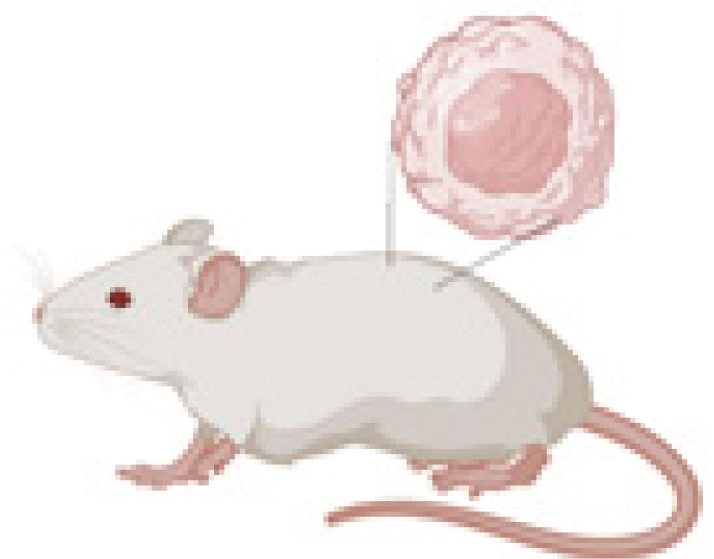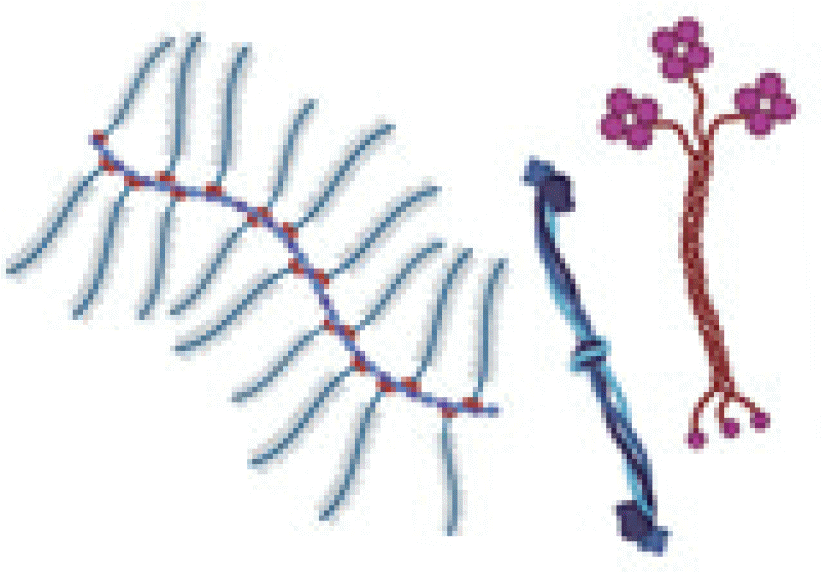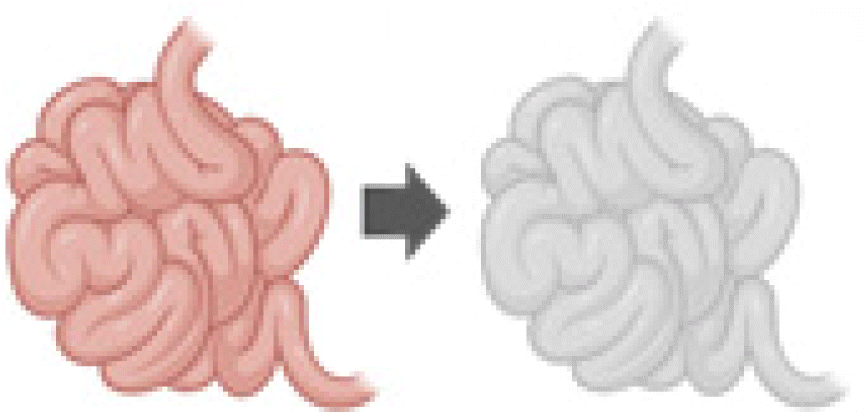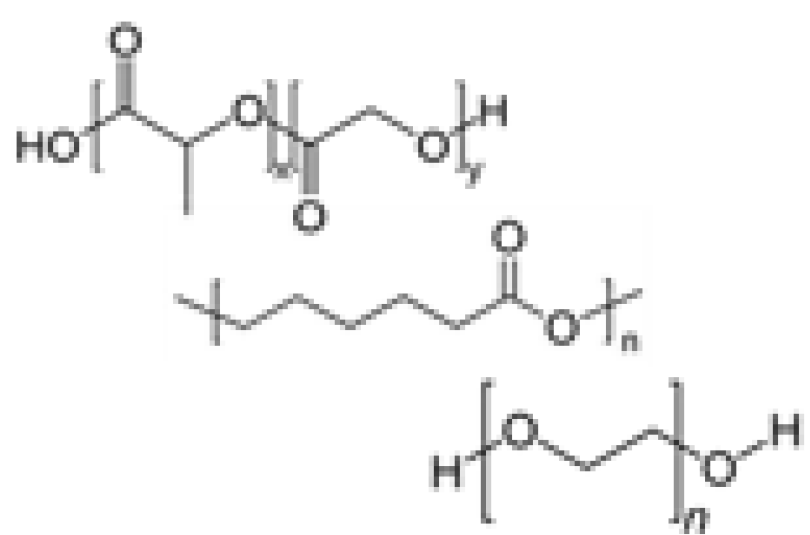1. Lancaster MA, Knoblich JA. 2014; Organogenesis in a dish: modeling development and disease using organoid technologies. Science. 345:1247125. DOI:
10.1126/science.1247125. PMID:
25035496.

7. Vukicevic S, Kleinman HK, Luyten FP, Roberts AB, Roche NS, Reddi AH. 1992; Identification of multiple active growth factors in basement membrane Matrigel suggests caution in interpretation of cellular activity related to extracellular matrix components. Exp Cell Res. 202:1–8. DOI:
10.1016/0014-4827(92)90397-Q. PMID:
1511725.

8. Gillette KM, Forbes K, Sehgal I. 2003; Detection of matrix metalloproteinases (MMP), tissue inhibitor of metalloproteinase-2, urokinase and plasminogen activator inhibitor-1 within matrigel and growth factor-reduced matrigel basement mem-brane. Tumori. 89:421–425. DOI:
10.1177/030089160308900415. PMID:
14606648.

10. Vining KH, Mooney DJ. 2017; Mechanical forces direct stem cell behaviour in development and regeneration. Nat Rev Mol Cell Biol. 18:728–742. DOI:
10.1038/nrm.2017.108. PMID:
29115301. PMCID:
PMC5803560.

12. Jabaji Z, Sears CM, Brinkley GJ, Lei NY, Joshi VS, Wang J, Lewis M, Stelzner M, Martín MG, Dunn JC. 2013; Use of collagen gel as an alternative extracellular matrix for the in vitro and in vivo growth of murine small intestinal epithelium. Tissue Eng Part C Methods. 19:961–969. DOI:
10.1089/ten.tec.2012.0710. PMID:
23566043. PMCID:
PMC3833386.

13. Sachs N, Tsukamoto Y, Kujala P, Peters PJ, Clevers H. 2017; Intestinal epithelial organoids fuse to form self-organizing tubes in floating collagen gels. Development. 144:1107–1112. DOI:
10.1242/dev.143933. PMID:
28292848.

14. Jee JH, Lee DH, Ko J, Hahn S, Jeong SY, Kim HK, Park E, Choi SY, Jeong S, Lee JW, Cho HJ, Kwon MS, Yoo J. 2019; Development of collagen-based 3D matrix for gastrointestinal tract-derived organoid culture. Stem Cells Int. 2019:8472712. DOI:
10.1155/2019/8472712. PMID:
31312220. PMCID:
PMC6595382.

15. Cruz NM, Song X, Czerniecki SM, Gulieva RE, Churchill AJ, Kim YK, Winston K, Tran LM, Diaz MA, Fu H, Finn LS, Pei Y, Himmelfarb J, Freedman BS. 2017; Organoid cystogenesis reveals a critical role of microenvironment in human polycystic kidney disease. Nat Mater. 16:1112–1119. DOI:
10.1038/nmat4994. PMID:
28967916. PMCID:
PMC5936694.

17. Capeling MM, Czerwinski M, Huang S, Tsai YH, Wu A, Nagy MS, Juliar B, Sundaram N, Song Y, Han WM, Takayama S, Alsberg E, Garcia AJ, Helmrath M, Putnam AJ, Spence JR. 2019; Nonadhesive alginate hydrogels support growth of pluripotent stem cell-derived intestinal orga-noids. Stem Cell Reports. 12:381–394. DOI:
10.1016/j.stemcr.2018.12.001. PMID:
30612954. PMCID:
PMC6373433.

18. Patel SN, Ishahak M, Chaimov D, Velraj A, LaShoto D, Hagan DW, Buchwald P, Phelps EA, Agarwal A, Stabler CL. 2021; Organoid microphysiological system preserves pancreatic islet function within 3D matrix. Sci Adv. 7:ea–ba5515. DOI:
10.1126/sciadv.aba5515. PMID:
33579705. PMCID:
PMC7880596.

19. Curvello R, Alves D, Abud HE, Garnier G. 2021; A thermo-responsive collagen-nanocellulose hydrogel for the growth of intestinal organoids. Mater Sci Eng C Mater Biol Appl. 124:112051. DOI:
10.1016/j.msec.2021.112051. PMID:
33947545.

20. Sokol ES, Miller DH, Breggia A, Spencer KC, Arendt LM, Gupta PB. 2016; Growth of human breast tissues from patient cells in 3D hydrogel scaffolds. Breast Cancer Res. 18:19. DOI:
10.1186/s13058-016-0677-5. PMID:
26926363. PMCID:
PMC4772689.

21. Homan KA, Gupta N, Kroll KT, Kolesky DB, Skylar-Scott M, Miyoshi T, Mau D, Valerius MT, Ferrante T, Bonventre JV, Lewis JA, Morizane R. 2019; Flow-enhanced vascularization and maturation of kidney organoids in vitro. Nat Methods. 16:255–262. DOI:
10.1038/s41592-019-0325-y. PMID:
30742039. PMCID:
PMC6488032.

22. Broguiere N, Isenmann L, Hirt C, Ringel T, Placzek S, Cavalli E, Ringnalda F, Villiger L, Züllig R, Lehmann R, Rogler G, Heim MH, Schüler J, Zenobi-Wong M, Schwank G. 2018; Growth of epithelial organoids in a defined hydrogel. Adv Mater. 30:e1801621. DOI:
10.1002/adma.201801621. PMID:
30203567.

23. Jin Y, Kim J, Lee JS, Min S, Kim S, Ahn DH, Kim YG, Cho SW. 2018; Vascularized liver organoids generated using induced hepatic tissue and dynamic liver-specific microenvironment as a drug testing platform. Adv Funct Mater. 28:1801954. DOI:
10.1002/adfm.201801954.

24. Jin Y, Shahriari D, Jeon EJ, Park S, Choi YS, Back J, Lee H, Anikeeva P, Cho SW. 2021; Functional skeletal muscle regeneration with thermally drawn porous fibers and reprogrammed muscle progenitors for volumetric muscle injury. Adv Mater. 33:e2007946. DOI:
10.1002/adma.202007946. PMID:
33605006.

25. Liao J, Xu B, Zhang R, Fan Y, Xie H, Li X. 2020; Applications of decellularized materials in tissue engineering: advantages, drawbacks and current improvements, and future perspectives. J Mater Chem B. 8:10023–10049. DOI:
10.1039/D0TB01534B. PMID:
33053004.

26. Saldin LT, Cramer MC, Velankar SS, White LJ, Badylak SF. 2017; Extracellular matrix hydrogels from decellularized tissues: structure and function. Acta Biomater. 49:1–15. DOI:
10.1016/j.actbio.2016.11.068. PMID:
27915024. PMCID:
PMC5253110.

27. Gilpin A, Yang Y. 2017; Decellularization strategies for regenerative medicine: from processing techniques to appli-cations. Biomed Res Int. 2017:9831534. DOI:
10.1155/2017/9831534. PMID:
28540307. PMCID:
PMC5429943.

29. Cho AN, Jin Y, An Y, Kim J, Choi YS, Lee JS, Kim J, Choi WY, Koo DJ, Yu W, Chang GE, Kim DY, Jo SH, Kim J, Kim SY, Kim YG, Kim JY, Choi N, Cheong E, Kim YJ, Je HS, Kang HC, Cho SW. 2021; Microfluidic device with brain extracellular matrix promotes structural and functional maturation of human brain organoids. Nat Commun. 12:4730. DOI:
10.1038/s41467-021-24775-5. PMID:
34354063. PMCID:
PMC8342542. PMID:
4baaa6ea520348a5bdc13ee2f2a1412c.

30. Schwartz DM, Pehlivaner Kara MO, Goldstein AM, Ott HC, Ekenseair AK. 2017; Spray delivery of intestinal organoids to reconstitute epithelium on decellularized native extracellular matrix. Tissue Eng Part C Methods. 23:565–573. DOI:
10.1089/ten.tec.2017.0269. PMID:
28756760. PMCID:
PMC5592844.

31. Giobbe GG, Crowley C, Luni C, Campinoti S, Khedr M, Kretzschmar K, De Santis MM, Zambaiti E, Michielin F, Meran L, Hu Q, van Son G, Urbani L, Manfredi A, Giomo M, Eaton S, Cacchiarelli D, Li VSW, Clevers H, Bonfanti P, Elvassore N, De Coppi P. 2019; Extracellular matrix hydrogel derived from decellularized tissues enables endodermal organoid culture. Nat Commun. 10:5658. DOI:
10.1038/s41467-019-13605-4. PMID:
31827102. PMCID:
PMC6906306. PMID:
a28b06f5539f456b97162079de3a5a5a.

32. Bi H, Ye K, Jin S. 2020; Proteomic analysis of decellularized pancreatic matrix identifies collagen V as a critical regulator for islet organogenesis from human pluripotent stem cells. Biomaterials. 233:119673. DOI:
10.1016/j.biomaterials.2019.119673. PMID:
31866049.

33. Bi H, Karanth SS, Ye K, Stein R, Jin S. 2020; Decellularized tissue matrix enhances self-assembly of islet organoids from pluripotent stem cell differentiation. ACS Biomater Sci Eng. 6:4155–4165. DOI:
10.1021/acsbiomaterials.0c00088. PMID:
33463310.

34. Dorgau B, Felemban M, Hilgen G, Kiening M, Zerti D, Hunt NC, Doherty M, Whitfield P, Hallam D, White K, Ding Y, Krasnogor N, Al-Aama J, Asfour HZ, Sernagor E, Lako M. 2019; Decellularised extracellular matrix-derived peptides from neural retina and retinal pigment epithelium enhance the expression of synaptic markers and light responsiveness of human pluripotent stem cell derived retinal organoids. Biomaterials. 199:63–75. DOI:
10.1016/j.biomaterials.2019.01.028. PMID:
30738336.

35. Vermeulen M, Del Vento F, Kanbar M, Pyr Dit Ruys S, Vertommen D, Poels J, Wyns C. 2019; Generation of organized porcine testicular organoids in solubilized hydrogels from decellularized extracellular matrix. Int J Mol Sci. 20:5476. DOI:
10.3390/ijms20215476. PMID:
31684200. PMCID:
PMC6862040.

36. Francés-Herrero E, Juárez-Barber E, Campo H, López-Martínez S, de Miguel-Gómez L, Faus A, Pellicer A, Ferrero H, Cervelló I. 2021; Improved models of human endometrial organoids based on hydrogels from decellularized endometrium. J Pers Med. 11:504. DOI:
10.3390/jpm11060504. PMID:
34205034. PMCID:
PMC8229407. PMID:
e3738e6c805b4812807a4e93f8a15c60.

37. Cruz-Acuña R, Quirós M, Huang S, Siuda D, Spence JR, Nusrat A, García AJ. 2018; PEG-4MAL hydrogels for human organoid generation, culture, and in vivo delivery. Nat Protoc. 13:2102–2119. Erratum in: Nat Protoc 2019;14:2258. DOI:
10.1038/s41596-018-0036-3. PMID:
30190557. PMCID:
PMC7240347.

38. Hoang P, Kowalczewski A, Sun S, Winston TS, Archilla AM, Lemus SM, Ercan-Sencicek AG, Gupta AR, Liu W, Kontaridis MI, Amack JD, Ma Z. 2021; Engineering spatial-organized cardiac organoids for developmental toxicity testing. Stem Cell Reports. 16:1228–1244. DOI:
10.1016/j.stemcr.2021.03.013. PMID:
33891865. PMCID:
PMC8185451.

39. Cruz-Acuña R, Quirós M, Farkas AE, Dedhia PH, Huang S, Siuda D, García-Hernández V, Miller AJ, Spence JR, Nusrat A, García AJ. 2017; Synthetic hydrogels for human intestinal organoid generation and colonic wound repair. Nat Cell Biol. 19:1326–1335. DOI:
10.1038/ncb3632. PMID:
29058719. PMCID:
PMC5664213.

40. Hernandez-Gordillo V, Kassis T, Lampejo A, Choi G, Gamboa ME, Gnecco JS, Brown A, Breault DT, Carrier R, Griffith LG. 2020; Fully synthetic matrices for in vitro culture of primary human intestinal enteroids and endometrial organoids. Biomaterials. 254:120125. DOI:
10.1016/j.biomaterials.2020.120125. PMID:
32502894. PMCID:
PMC8005336.

41. Gjorevski N, Sachs N, Manfrin A, Giger S, Bragina ME, Ordóñez-Morán P, Clevers H, Lutolf MP. 2016; Designer matrices for intestinal stem cell and organoid culture. Nature. 539:560–564. DOI:
10.1038/nature20168. PMID:
27851739.

42. Gjorevski N, Lutolf MP. 2017; Synthesis and characterization of well-defined hydrogel matrices and their application to intestinal stem cell and organoid culture. Nat Protoc. 12:2263–2274. DOI:
10.1038/nprot.2017.095. PMID:
28981121.

43. Klotz BJ, Oosterhoff LA, Utomo L, Lim KS, Vallmajo-Martin Q, Clevers H, Woodfield TBF, Rosenberg AJWP, Malda J, Ehrbar M, Spee B, Gawlitta D. 2019; A versatile biosynthetic hydrogel platform for engineering of tissue analogues. Adv Healthc Mater. 8:e1900979. DOI:
10.1002/adhm.201900979. PMID:
31402634. PMCID:
PMC7116179.

44. Wang Y, Liu H, Zhang M, Wang H, Chen W, Qin J. 2020; One-step synthesis of composite hydrogel capsules to support liver organoid generation from hiPSCs. Biomater Sci. 8:5476–5488. DOI:
10.1039/D0BM01085E. PMID:
32914807.

45. Dye BR, Youngblood RL, Oakes RS, Kasputis T, Clough DW, Spence JR, Shea LD. 2020; Human lung organoids develop into adult airway-like structures directed by physico-chemical biomaterial properties. Biomaterials. 234:119757. DOI:
10.1016/j.biomaterials.2020.119757. PMID:
31951973. PMCID:
PMC6996062.

46. Davoudi Z, Peroutka-Bigus N, Bellaire B, Wannemuehler M, Barrett TA, Narasimhan B, Wang Q. 2018; Intestinal organoids containing poly(lactic-co-glycolic acid) nanoparticles for the treatment of inflammatory bowel diseases. J Biomed Mater Res A. 106:876–886. DOI:
10.1002/jbm.a.36305. PMID:
29226615. PMCID:
PMC5826879.

47. Dosh RH, Jordan-Mahy N, Sammon C, Le Maitre CL. 2019; Use of l-pNIPAM hydrogel as a 3D-scaffold for intestinal crypts and stem cell tissue engineering. Biomater Sci. 7:4310–4324. DOI:
10.1039/C9BM00541B. PMID:
31410428.

48. Kumar SV, Er PX, Lawlor KT, Motazedian A, Scurr M, Ghobrial I, Combes AN, Zappia L, Oshlack A, Stanley EG, Little MH. 2019; Kidney micro-organoids in suspension culture as a scalable source of human pluripotent stem cell-derived kidney cells. Development. 146:dev172361. DOI:
10.1242/dev.172361. PMID:
30846463. PMCID:
PMC6432662.

49. Shin W, Ambrosini YM, Shin YC, Wu A, Min S, Koh D, Park S, Kim S, Koh H, Kim HJ. 2020; Robust formation of an epithelial layer of human intestinal organoids in a polydimethylsiloxane-based gut-on-a-chip microdevice. Front Med Technol. 2:2. DOI:
10.3389/fmedt.2020.00002. PMID:
33532747. PMCID:
PMC7849371.

50. Lancaster MA, Corsini NS, Wolfinger S, Gustafson EH, Phillips AW, Burkard TR, Otani T, Livesey FJ, Knoblich JA. 2017; Guided self-organization and cortical plate formation in human brain organoids. Nat Biotechnol. 35:659–666. Erratum in: Nat Biotechnol 2018;36:1016. DOI:
10.1038/nbt.3906. PMID:
28562594. PMCID:
PMC5824977.

52. Lee JS, Choi YS, Lee JS, Jeon EJ, An S, Lee MS, Yang HS, Cho SW. 2022; Mechanically-reinforced and highly adhesive decellularized tissue-derived hydrogel for efficient tissue repair. Chem Eng J. 427:130926. DOI:
10.1016/j.cej.2021.130926.

53. Petrou CL, D'Ovidio TJ, Bölükbas DA, Tas S, Brown RD, Allawzi A, Lindstedt S, Nozik-Grayck E, Stenmark KR, Wagner DE, Magin CM. 2020; Clickable decellularized extracellular matrix as a new tool for building hybrid-hydrogels to model chronic fibrotic diseases in vitro. J Mater Chem B. 8:6814–6826. DOI:
10.1039/D0TB00613K. PMID:
32343292.





 PDF
PDF Citation
Citation Print
Print






 XML Download
XML Download